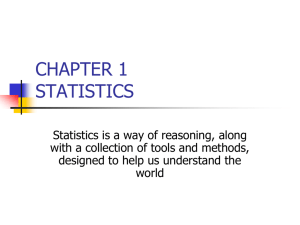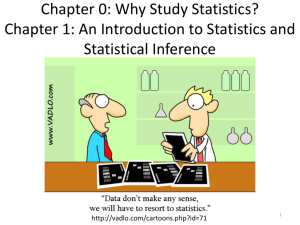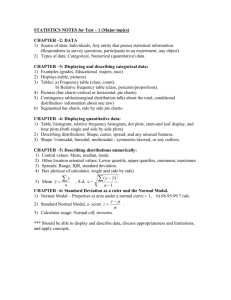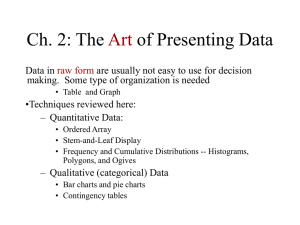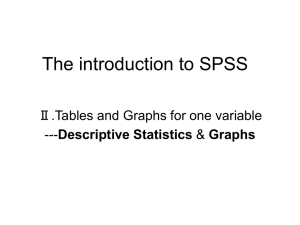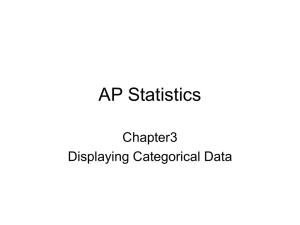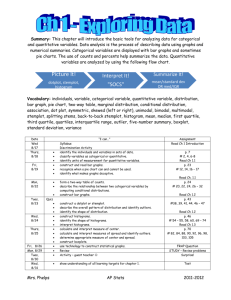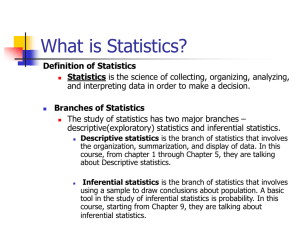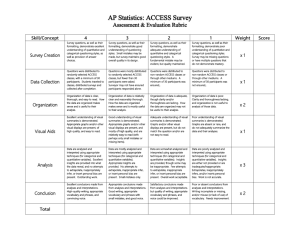Displaying Categorical Data
advertisement
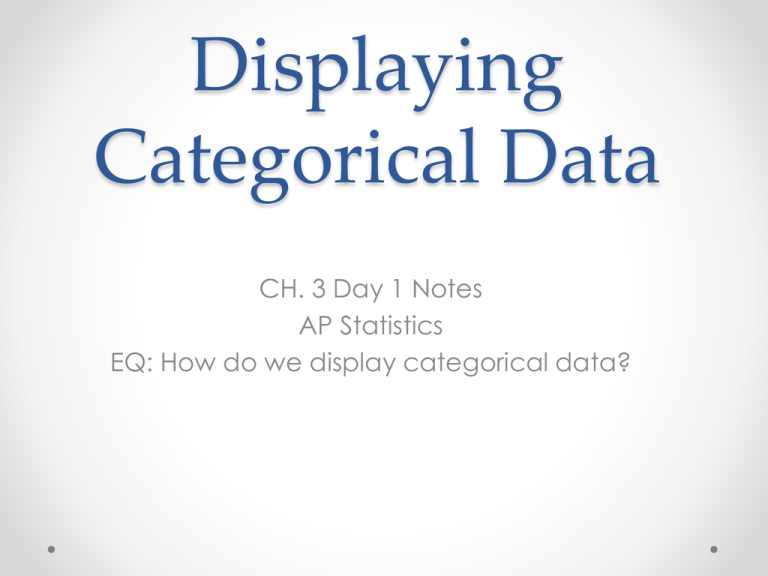
Displaying Categorical Data CH. 3 Day 1 Notes AP Statistics EQ: How do we display categorical data? Warm Up Identify the W’s, name the variables and specify if it should be treated as categorical or quantitative. A listing posted by the Arby’s restaurant chain gives, for each of the sandwiches it sells, the type of meat in the sandwich, the number of calories, and the serving size in ounces. The data might be used to assess the nutritional value of the different sandwiches. Warm Up - Answer • Who (are we studying): Arby’s sandwiches • What (characteristics are we using): o Type of meat (categorical) o number of calories (quantitative) (calories) o serving size (quantitative) (ounces) • When: Not specified • Where: Arby’s restaurants • How: We are using the list posted by the restaurant Tell whether the variable is categorical, quantitative, or an identifier. 1.Shoe size 2.VIN number of a car 3.Number of pages in a book 4.Class rank 5.Length of your arm Extra In what way might Age be considered to be a quantitative variable? What about as a categorical variable? Ways to Represent Data Today we will focus on: Frequency Tables Bar BarCharts Charts Relative Frequency Tables Pie Charts Frequency Tables • Helps organize data • Records totals and categories • Relative frequency table-displays the percentages(proportions) of the values in each category. Make a frequency table and a relative frequency table of the following averages for previous AP Stats students. A F C F C B B C A D B C D D B B D C B A C A A B B C C D D F F Why make a picture? • It may reveal things you can’t see in the table • It shows important features • It helps you tell about the data to others Things to Remember… • • • • Context Appropriate Scale Area Principle Label! oInclude units where applicable Make a bar chart of the previous AP Stats averages by letter grade. You may also see it like this… F D C B A 0 1 2 3 4 5 6 7 What do we see in the graph? Make a relative frequency bar chart of the previous AP Stats averages. Pie Charts Make a pie chart of the previous AP Stats averages. A B C D F A B C D F What do we see in the graph? • • • • A should look bigger than F B and C should look the same B and C should look twice the size of A D should appear larger than A • Can approximate areas • Can also use Geometry to calculate Central Angle measures (cross-curricular) Important Disclaimer: CAN ONLY USE BAR CHARTS AND PIE CHARTS AS LONGS AS INDIVIDUALS BEING STUDIED DO NOT FALL INTO MORE THAN ONE CATEGORY. The table below gives the distribution by region of the population in the United States in 1996. Region Population(in millions) Northeast 51.6 Midwest 62.1 South 93.1 West 58.5 Make a pie chart of the population data. NE MW S W Homework p. 36-44 # 5, 7, 8, 10, 11, 13, 14 (due Monday) Reminder: Due tomorrow1) p.16 Homework from Textbook 2) Reading Questions Ch.2-3
